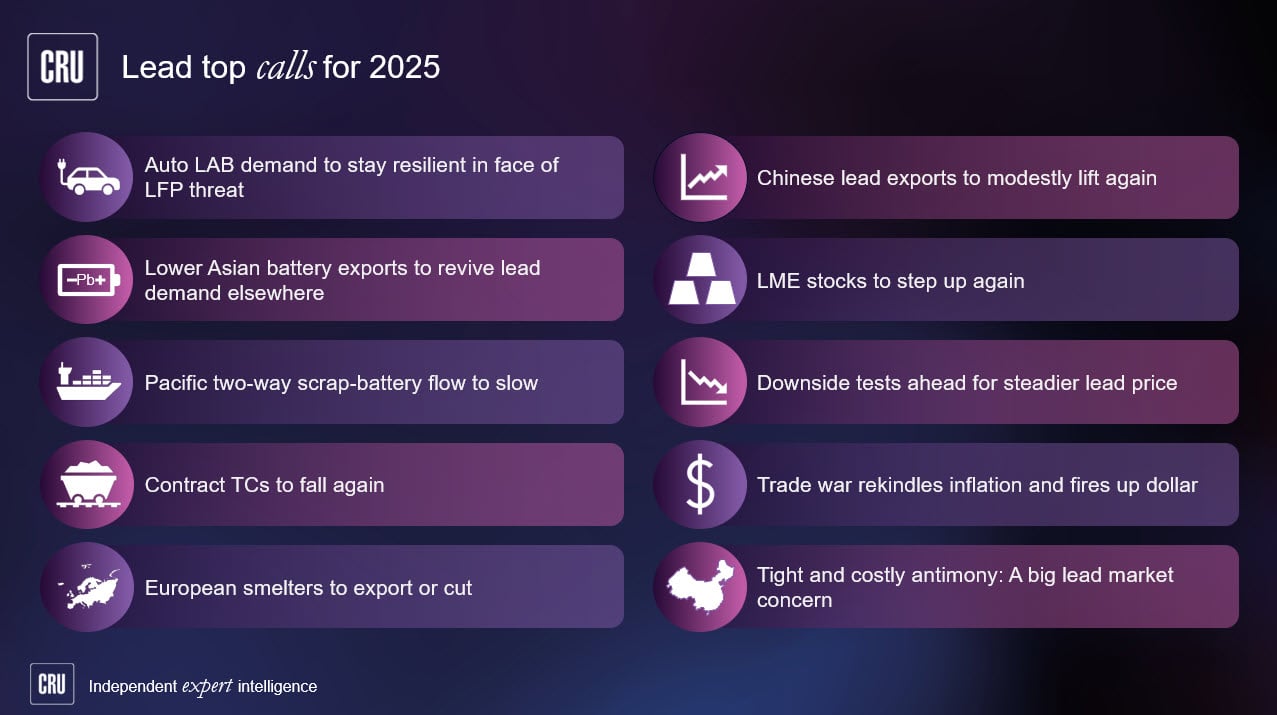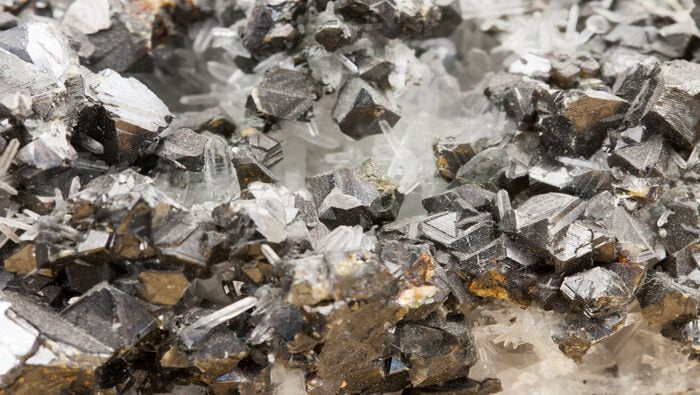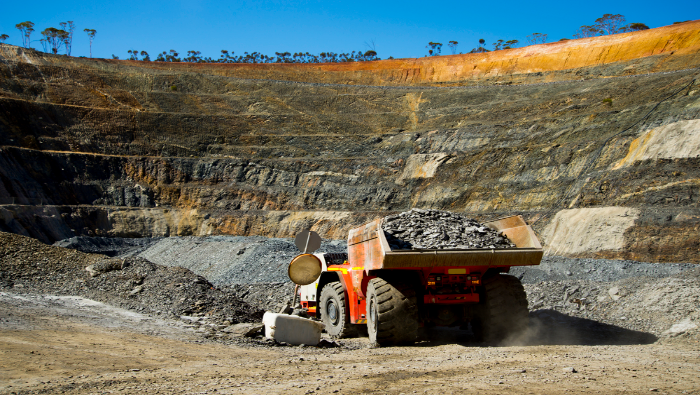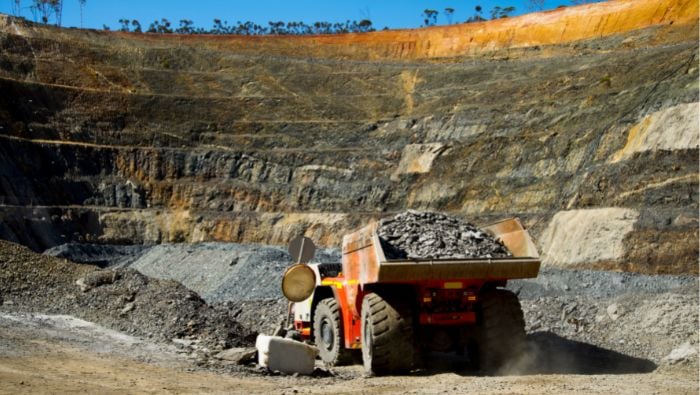CRU has picked out 10 key lead market calls for 2024. More intrigue lies in larger regional imbalances than any strong global lead market narrative, so LME lead prices are likely to plot a steadier price path than other LME metals this year.
CRU's comprehensive lead snapshot outlook offers an exclusive glimpse into the strategic movements, demand fluctuations, and supply chain adjustments that are set to define the market.
Unlock the full potential of CRU insights by accessing the complete top ten calls report, designed to guide stakeholders through the complexities of the lead market in the upcoming year.
1. Scrap competition remains tight outside US
The dominance of tolling will ensure US lead recyclers have high scrap inventories and perform better as skilled labour shortages ease. Elsewhere, the excess of smelter capacity chasing the scrap pool will keep margins tight. We expect no capacity bottleneck and strong global secondary lead output growth.
2. Primary smelter focus shifts from lead to silver
Global primary lead output is set for a second year of recovery from a marked 2022 dip. However, the degree of rise will be restrained by the treatment of more lower lead content feed, and a greater focus on silver (rather than lead) recoveries from mined concentrate at multi-metal revenue-driven plants.
3. Auto battery demand to stay resilient
The resilience of the dominant replacement sector – as new vehicle sales slow this year and more people replace batteries in existing vehicles – will support steady auto lead battery demand growth. Low voltage (12V) lead batteries will continue to dominate across new vehicle powertrains.
4. Upside surprise to non-auto battery demand?
Big growth ahead in Battery Energy Storage Systems (BESS) cannot be met by lithium batteries alone. Lead is the only other battery chemistry that can help meet the need on a mass market scale. EV fast charge buffering and ‘behind-the-metre’ back-up offer opportunities.
5. Submarine lead cable sheathing offers promise
Onshore energy transmission is driven by high voltage copper cabling. However, offshore lead sheathing provides unique underwater protection to cables. There is a growing list of projects to link renewable energy between, or within, countries separated by a body of water.
Click here or below to enlarge the image
6. North American deficit still sizeable
This region will stay in sizeable deficit and reliant on imports to fill the local supply gap, limiting any further downside to premia. Tolling with US smelters should stay healthy, leaving traders to provide additional imports. And this cost has been rising following disruption to shipping routes in the Panama Canal and Red Sea which have lifted ocean freight rates.
7. Chinese exports to continue
Chinese production will remain above consumption, but the degree of excess will continue to be reined in by higher exports. 2023 exports of around 175 kt would be the highest since 2007. The export arb should stay mostly open this year, driven by a tighter US-led ex. China market compared to an easier Chinese market.
8. Wider Asian excess more visible
Last year’s autumn surge in LME stocks can be largely explained by a widening in the regional surplus across Asia due to a larger lift in output over demand. While Asian LME stocks have duly slipped, the net change is still up, and we strongly suspect that the metal removed is not for urgent market need.
9. Europe easing
Higher Asian imports contributed to an easing European market last year, alongside lower demand and restarts at some key smelters. Output should further close the gap on demand this year, with the diminishing local deficit more than filled by imports.
10. More sideways trading in lead
While testing the upside and downside at times, LME lead prices did not stray too far from the $2,100s trading range through 2023. Without a strong bullish or bearish ‘micro’ lead industry narrative, lead could get pulled around by broader ‘macro’ price drivers. However, CRU still sees lead plotting a steadier price path than other LME metals this year.

















